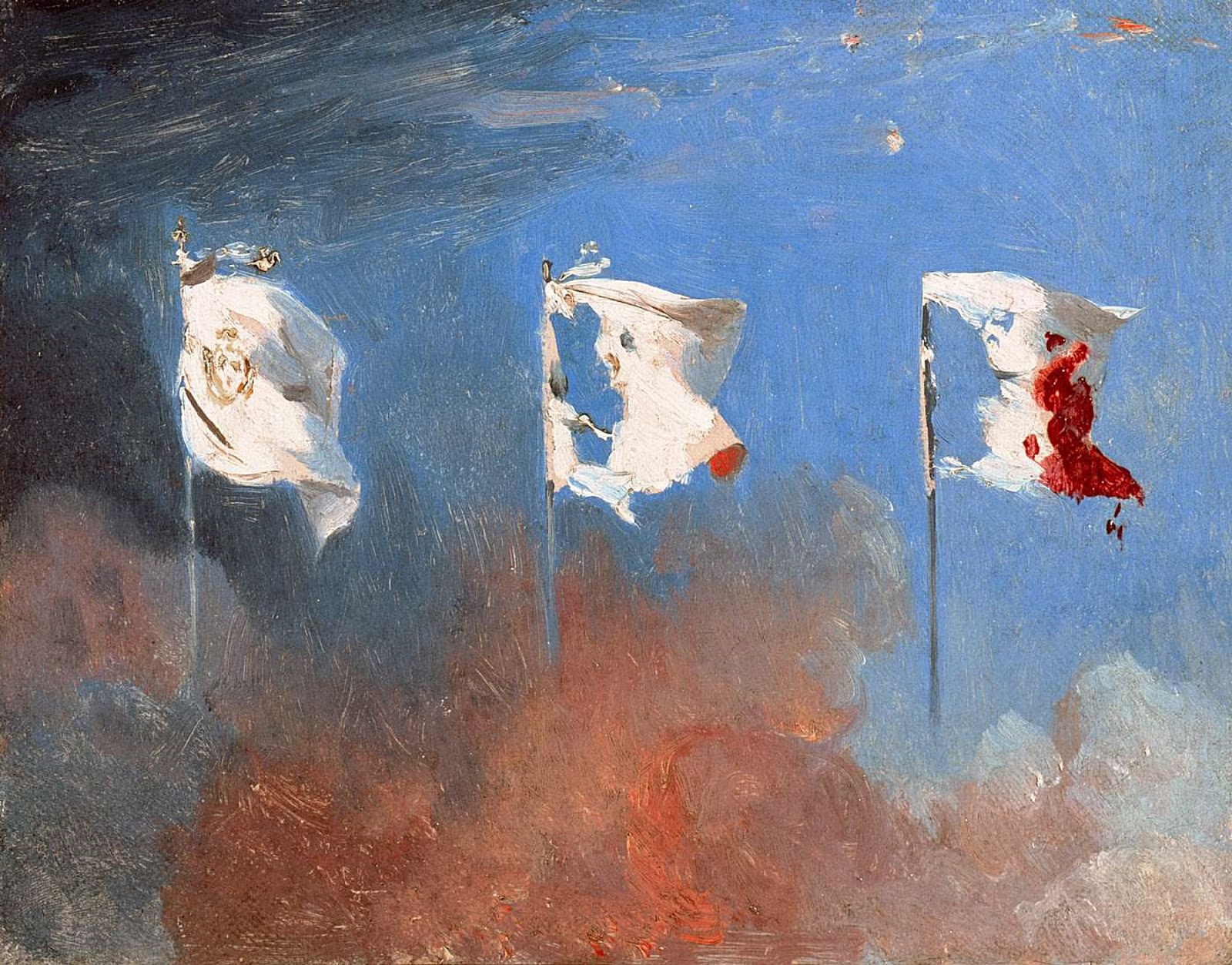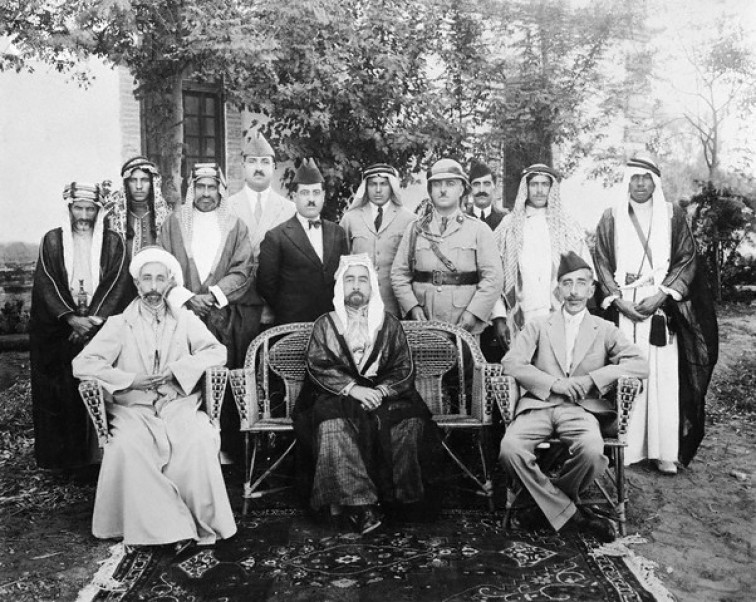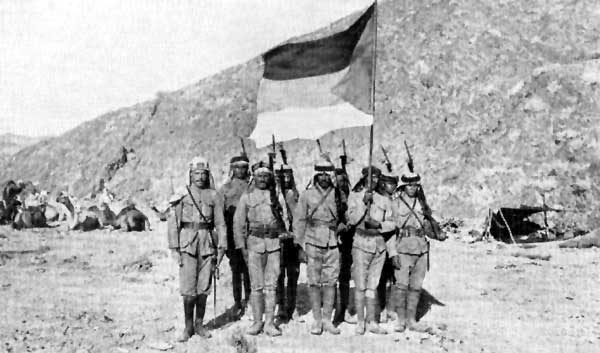|
List Of Flags Of Iraq
The flag of Iraq ( ar, علم العراق Kurdish languages: الله اكبر) includes the three equal horizontal red, white, and black stripes of the Arab Liberation flag, with the phrase "God is the greatest" in Arabic written in Kufic script in the center''.'' This basic tricolor has been in use since its adoption on 31 July 1963, with several changes to the green symbols in the central white stripes; the most recent version adopted on 22 January 2008 bears the ''takbīr'' rendered in dark green and removes the three green stars present since 1963. The northern autonomous provinces of Kurdistan Region emerged as an autonomous entity inside Iraq with its own local government and parliament. The Kurdistan Regional Government uses a separate flag known as the flag of Kurdistan which was adopted in 1992. Color scheme Valid for Iraqi flags 1963–present History 1921–1959 The first flag of modern Iraq was in Mandatory Iraq, and was adopted in 1921. It was a black- ... [...More Info...] [...Related Items...] OR: [Wikipedia] [Google] [Baidu] |
Tricolour (flag)
A tricolour () or tricolor () is a type of flag or banner design with a triband design which originated in the 16th century as a symbol of republicanism, liberty, or revolution. The flags of France, Italy, Romania, Mexico, and Ireland were all first adopted with the formation of an independent republic in the period of the French Revolution to the Revolutions of 1848, with the exception of the Irish tricolour, which dates from 1848 but was not popularised until the Easter Rising in 1916 and adopted in 1919. History The first association of the tricolour with republicanism is the orange-white-blue design of the Prince's Flag (''Prinsenvlag'', predecessor of the flags of the Netherlands), used from 1579 by William I of Orange-Nassau in the Eighty Years' War, establishing the independence of the Dutch Republic from the Spanish Empire. The flag of the Netherlands inspired both the French and Russian flags, which in turn inspired many further tricolour flags in other countrie ... [...More Info...] [...Related Items...] OR: [Wikipedia] [Google] [Baidu] |
Flag Of The Arab Federation
In 1958, in response to the merger of Egypt and Syria in the United Arab Republic, the two Hashemite kingdoms of Iraq and Jordan established the Arab Federation, a confederation of the two states. According to the 7th article of the Federation convention, the Arab revolt flag was to be the official flag of the Union.نص اتفاق الاتحاد العربي، موسوعة المقاتل The union lasted less than six months, being terminated by the Iraqi Revolution of 1958 [...More Info...] [...Related Items...] OR: [Wikipedia] [Google] [Baidu] |
Kingdom Of Hejaz
The Hashemite Kingdom of Hejaz ( ar, المملكة الحجازية الهاشمية, ''Al-Mamlakah al-Ḥijāziyyah Al-Hāshimiyyah'') was a state in the Hejaz region in the Middle East that included the western portion of the Arabian Peninsula that was ruled by the Hashemite dynasty. It was self-proclaimed as a kingdom in June 1916 during the First World War, to be independent from the Ottoman Empire, on the basis of an alliance with the British Empire to drive the Ottoman Army from the Arabian Peninsula during the Arab Revolt. The United Kingdom promised King Ali of Hejaz a single independent Arab state that would include modern day Iraq, Israel, Jordan, Palestine, and Syria in addition to the Hejaz region. However, at the end of the First World War, the Treaty of Versailles turned Syria into a French League of Nations mandate and Iraq, Palestine and Transjordan into British mandates. Hashemite princes were installed as monarchs under the British mandates in Tran ... [...More Info...] [...Related Items...] OR: [Wikipedia] [Google] [Baidu] |
Flag Of Jordan
The flag of Jordan, officially adopted on 16 April 1928, is based on the 1916 flag of the Arab Revolt against the Ottoman Empire during World War I. The flag consists of horizontal black, white, and green bands that are connected by a red chevron. The colours are the Pan-Arab Colors, respectively representing the Abbasid (black band), Umayyad (white band), and Fatimid or Rashidun caliphates (green band). The red chevron is for the Hashemite dynasty, and the Arab Revolt. Features In addition to the bands and chevron, a white star with seven points is featured on the hoist side of the red chevron. The star stands for the unity of the Arab people; its seven points refer to the seven verses of Al-Fatiha as well as the seven hills Amman was built on. History File:Flag of Hejaz 1920.svg, First flag (1921–1928) File:Flag of the Emirate of Transjordan.svg, Second flag (1928–1939) Interpretation of the colors Colours scheme Construction Sheet Historical flag ... [...More Info...] [...Related Items...] OR: [Wikipedia] [Google] [Baidu] |
Arab Revolt
The Arab Revolt ( ar, الثورة العربية, ) or the Great Arab Revolt ( ar, الثورة العربية الكبرى, ) was a military uprising of Arab forces against the Ottoman Empire in the Middle Eastern theatre of World War I. On the basis of the McMahon–Hussein Correspondence, an agreement between the British government and Hussein bin Ali, Sharif of Mecca, the revolt was officially initiated at Mecca on June 10, 1916. The aim of the revolt was to create a single unified and independent Arab state stretching from Aleppo in Syria to Aden in Yemen, which the British had promised to recognize. The Sharifian Army led by Hussein and the Hashemites, with military backing from the British Egyptian Expeditionary Force, successfully fought and expelled the Ottoman military presence from much of the Hejaz and Transjordan. The rebellion eventually took Damascus and set up the Arab Kingdom of Syria, a short-lived monarchy led by Faisal, a son of Hussein. Following the Sy ... [...More Info...] [...Related Items...] OR: [Wikipedia] [Google] [Baidu] |
Arabian Peninsula
The Arabian Peninsula, (; ar, شِبْهُ الْجَزِيرَةِ الْعَرَبِيَّة, , "Arabian Peninsula" or , , "Island of the Arabs") or Arabia, is a peninsula of Western Asia, situated northeast of Africa on the Arabian Plate. At , the Arabian Peninsula is the largest peninsula in the world. Geographically, the Arabian Peninsula includes Bahrain, Kuwait, Oman, Qatar, Saudi Arabia, the United Arab Emirates (UAE), and Yemen, as well as the southern portions of Iraq and Jordan. The largest of these is Saudi Arabia. In the classical era, the southern portions of modern-day Syria, Jordan, and the Sinai Peninsula were also considered parts of Arabia (see Arabia Petraea). The Arabian Peninsula formed as a result of the rifting of the Red Sea between 56 and 23 million years ago, and is bordered by the Red Sea to the west and southwest, the Persian Gulf and the Gulf of Oman to the northeast, the Levant and Mesopotamia to the north and the Arabian Sea and the Indian ... [...More Info...] [...Related Items...] OR: [Wikipedia] [Google] [Baidu] |
Hejaz
The Hejaz (, also ; ar, ٱلْحِجَاز, al-Ḥijāz, lit=the Barrier, ) is a region in the west of Saudi Arabia. It includes the cities of Mecca, Medina, Jeddah, Tabuk, Yanbu, Taif, and Baljurashi. It is also known as the "Western Province" in Saudi Arabia.Mackey, p. 101. "The Western Province, or the Hejaz .. It is bordered in the west by the Red Sea, in the north by Jordan, in the east by the Najd, and in the south by the 'Asir Region. Its largest city is Jeddah (the second largest city in Saudi Arabia), with Mecca and Medina being the fourth and fifth largest cities respectively in the country. The Hejaz is the most cosmopolitan region in the Arabian Peninsula. The Hejaz is significant for being the location of the Islamic holy cities of Mecca and Medina, the first and second holiest sites in Islam, respectively. As the site of the two holiest sites in Islam, the Hejaz has significance in the Arab and Islamic historical and political landscape. The region of Hejaz is ... [...More Info...] [...Related Items...] OR: [Wikipedia] [Google] [Baidu] |
Hashemite
The Hashemites ( ar, الهاشميون, al-Hāshimīyūn), also House of Hashim, are the royal family of Jordan, which they have ruled since 1921, and were the royal family of the kingdoms of Hejaz (1916–1925), Syria (1920), and Iraq (1921–1958). The family had ruled the city of Mecca continuously from the 10th century, frequently as vassals of outside powers, and were given the thrones of the Hejaz, Syria, Iraq, and Jordan following their World War I alliance with the British Empire; this arrangement became known as the "Sharifian solution". The family belongs to the Dhawu Awn, one of the branches of the Ḥasanid Sharifs of Mecca, also referred to as Hashemites. Their eponymous ancestor is traditionally considered to be Hashim ibn Abd Manaf, great-grandfather of the Islamic prophet Muhammad. The Ḥasanid Sharifs of Mecca (from whom the Hashemite royal family is directly descended), including the Hashemites' ancestor Qatadah ibn Idris, were Zaydī Shīʿas until the l ... [...More Info...] [...Related Items...] OR: [Wikipedia] [Google] [Baidu] |
Euphrates
The Euphrates () is the longest and one of the most historically important rivers of Western Asia. Tigris–Euphrates river system, Together with the Tigris, it is one of the two defining rivers of Mesopotamia ( ''the land between the rivers''). Originating in Turkey, the Euphrates flows through Syria and Iraq to join the Tigris in the Shatt al-Arab, which empties into the Persian Gulf. Etymology The Ancient Greek form ''Euphrátēs'' ( grc, Εὐφράτης, as if from Greek εὖ "good" and φράζω "I announce or declare") was adapted from Old Persian 𐎢𐎳𐎼𐎠𐎬𐎢 ''Ufrātu'', itself from Elamite language, Elamite 𒌑𒅁𒊏𒌅𒅖 ''ú-ip-ra-tu-iš''. The Elamite name is ultimately derived from a name spelt in cuneiform as 𒌓𒄒𒉣 , which read as Sumerian language, Sumerian is "Buranuna" and read as Akkadian language, Akkadian is "Purattu"; many cuneiform signs have a Sumerian pronunciation and an Akkadian pronunciation, taken from a Sumerian word a ... [...More Info...] [...Related Items...] OR: [Wikipedia] [Google] [Baidu] |
Tigris
The Tigris () is the easternmost of the two great rivers that define Mesopotamia, the other being the Euphrates. The river flows south from the mountains of the Armenian Highlands through the Syrian and Arabian Deserts, and empties into the Persian Gulf. Geography The Tigris is 1,750 km (1,090 mi) long, rising in the Taurus Mountains of eastern Turkey about 25 km (16 mi) southeast of the city of Elazığ and about 30 km (20 mi) from the headwaters of the Euphrates. The river then flows for 400 km (250 mi) through Southeastern Turkey before becoming part of the Syria-Turkey border. This stretch of 44 km (27 mi) is the only part of the river that is located in Syria. Some of its affluences are Garzan, Anbarçayi, Batman, and the Great and the Little Zab. Close to its confluence with the Euphrates, the Tigris splits into several channels. First, the artificial Shatt al-Hayy branches off, to join the Euphrates near Nasiriyah. ... [...More Info...] [...Related Items...] OR: [Wikipedia] [Google] [Baidu] |
Flag Of The Arab Revolt
The flag of the Arab Revolt, also known as the flag of Hejaz, was a flag used by the Arab nationalists during the Arab Revolt against the Ottoman Empire during World War I, and as the first flag of the Kingdom of Hejaz. History It has been suggested that the flag was designed by the British diplomat Sir Mark Sykes, in an effort to create a feeling of "Arab-ness" in order to fuel the revolt. According to Stanford University historian Joshua Teitelbaum, this claim is made both by Sykes' 1923 biographer and by Hussein ibn Ali al-Hashimi, who in 1918 told Woodrow Wilson that it symbolished Hashemite rule over the Arab world. According to one version, Sykes, keen to challenge the French flag being flown in French-controlled Arab territories, offered several designs to Hussein, who chose the one that was then used. However, the flag is highly reminiscent of earlier flags used by Arab nationalists, such as those used by [...More Info...] [...Related Items...] OR: [Wikipedia] [Google] [Baidu] |
Green
Green is the color between cyan and yellow on the visible spectrum. It is evoked by light which has a dominant wavelength of roughly 495570 Nanometre, nm. In subtractive color systems, used in painting and color printing, it is created by a combination of yellow and cyan; in the RGB color model, used on television and computer screens, it is one of the additive primary colors, along with red and blue, which are mixed in different combinations to create all other colors. By far the largest contributor to green in nature is chlorophyll, the chemical by which plants photosynthesis, photosynthesize and convert sunlight into chemical energy. Many creatures have adapted to their green environments by taking on a green hue themselves as camouflage. Several minerals have a green color, including the emerald, which is colored green by its chromium content. During Post-classical history, post-classical and Early modern period, early modern Europe, green was the color commonly assoc ... [...More Info...] [...Related Items...] OR: [Wikipedia] [Google] [Baidu] |


.png)
.jpg)




